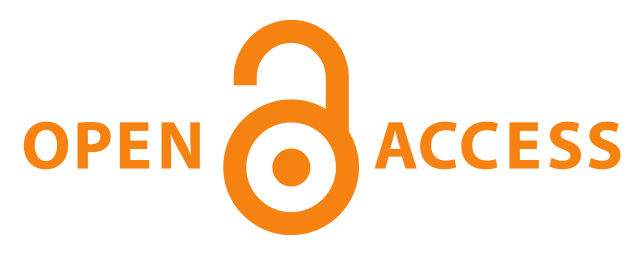Laser in Therapy of Tinnitus in Actual Physiotherapy – the Randomized Pilot Trial
DOI:
https://doi.org/10.46585/hc.2023.2.2510Keywords:
high power laser, low power laser, somatosensoric tinnitus, tinnitusAbstract
Indroduction: This article reports on a three-month application of low- and high-power laser for the treatment of tinnitus as a disease of civilization. It is a pilot study aimed at determining the effectiveness of a possible treatment for tinnitus within physiotherapy procedures.
Methodology: The study design is based on an experimental longitudinal prospective pilot study to test the efficacy of low and high power laser therapy in patients suffering from somatosensory type tinnitus. Two groups of probands (á 9) were examined by a neurologist, an ENT physician, a physiotherapist and were further tested using the TSCHQ and THI questionnaire. From the questionnaire survey, quality of life, quality of hearing, perception of tinnitus loudness, tinnitus anxiety were mainly studied. Over a period of 3 months, all probands were treated with laser, one group with HILT, the other with LPL, in clearly described positions and parameters of the devices used. This study complied with the CONSORT checklist.
Results: Comparison of the mean values of the THI and TSCHQ questionnaires before and after the intervention indicate a positive effect of tinnitus treatment with both HILT and LPL, despite the considerable limitation of the work, which is the small number of probands.
Conclusion: The therapeutic benefit of both HILT and LPL is evident, but rather assessable as a therapeutic trend. Statistical analysis shows a positive effect of LPL on hearing improvement and on the reduction of subjectively perceived tinnitus loudness when using HILT. LPL did not show an effect on the reduction of perceived tinnitus loudness.
Downloads
References
Abtahi, H., Berjis, N., Malekpour, A., Okhovat, A., & Okhovat, H. (2011). Low-level laser for treatment of tinnitus: a self-controlled clinical trial. Journal of Research in Medical Sciences, 16(1), 33–38. https://www.ncbi.nlm.nih.gov/pmc/articles/PMC3063436/
Akcaboy, C., Demirkol, M., Demirkol, N., Sari, F., & Usumez, A. (2017). Efficacy of Low-Level Laser Therapy in Subjective Tinnitus Patients with Temporomandibular Disorders. Photomedicine and Laser Surgery, 35(8), 427–431. http://doi:10.1089/pho.2016.4240
Akeroyd, M., A., Biswas, R., Gallus, S., Hall, D., A., Lugo, A., & Schlee, W. (2021). Tinnitus prevalence in Europe: a multi-country cross-sectional population study. The Lancet Regional Health – Europe. 12, 100250. http://doi:10.1016/j.lanepe.2021.100250
Algieri, G. M. A., Arangio, P., Cascone, P., Leonardi, A., Paolo, C. D., & Velone, V. (2017). Tinnitus in Temporomandibular Joint Disorders: Is it a Specific Somatosensory Tinnitus Subtype? The International Tinnitus Journal, 20(2), 83-87. http://doi:10.5935/0946-5448.20160016
Alian, W. A., Bance, M., Gerland, P., Makki, F. M., Savage, J., & Wijhe, R. G. (2013). Effects of tensor tympani muscle contraction on the middle ear and markers of a contracted muscle. The Laryngoscope, 123(4), 1021–1027. http://doi:10.1002/lary.23711
Baguley, D., Hall, D., & McFerran, D. (2013). Tinnitus. The Lancet, 382(9904). 1600–1607.
http://doi:10.1016/S0140-6736(13)60142-7
BTL-6000 High intensity laser 10W – BTL terapeutická encyklopedie (2019). BeutyLine. 53.
Dobel, Ch., Hesse, G., Kratzsch, V., Lahmann, C., Mazurek, B., & Sattel, H. (2022). Chronic tinnitus. Deutsches Ärzteblatt international, 119(13), 219-225. http://doi:10.3238/arztebl.m2022.0135
Eichhammer, P., Hajak G., Kleinjung, T., Kreutzer, A., Langguth, B., Maenner, P., Marienhagen, J., & Sand, P. (2006). The impact of auditory cortex activity on characterizing and treating patients with chronic tinnitus-first results from a PET study, Acta oto-laryngologica. Supplementum, 556, 84–88. http://doi: 10.1080/03655230600895317
Farská, T. (2023). Komparativní studie využití vysokovýkonné a nízkovýkonné laseroterapie při léčbě tinnitu. Diplomová práce. FTVS UK, digitální repozitář Univerzity Karlovy. https://dspace.cuni.cz/handle/20.500.11956/180937
Gos, E., Sagan, A., Skarzynski, P. H., & Skarzynski, H. (2020). Improved measurement of tinnitus severity: Study of the dimensionality and reliability of the Tinnitus Handicap Inventory. PLOS ONE, 15(8), e0237778. https://doi.org/10.1371/journal.pone.0237778
Hajak, G., Kleinjung, T., Kreuzer, P., Landgrebe, M., Langguth, B., Manner, P., Marienhagen, J., Poeppl, T. B., Schecklmann, M., & Wack, D. S. (2013). Neural correlates of tinnitus duration and Distress: A positron emission tomography study, Human Brain Mapping, 34(1), 233–240. https://doi.org/10.1002/hbm.21426
Hanh A. (2015). Otoneurologie a tinitologie (2., doplněné vydání). Grada Publishing.
Huang Ch., Chang Ch., Chen, Ch., & Cheng, Y. (2020). Efficacy of Low-Level Laser Therapy for Tinnitus: A Systematic Review with Meta-Analysis and Trial Sequential Analysis. Brain Sciences, 10(12), 931. http://doi:10.3390/brainsci10120931
Kanzaki, S., Kojima, T., Ogawa, K., & Oishi, N. (2017). Clinical characteristics of patients with tinnitus evaluated with the Tinnitus Sample Case History Questionnaire in Japan: A case series. PLOS ONE, 12(8). https://doi.org/10.1371/journal.pone.0180609
Mahmoudian, S., Mohsen, S., Pourbakht, A., & Talbian, S. (2019). Correlation Analysis of the Tinnitus Handicap Inventory and Distress Network in Chronic Tinnitus: An EEG Study. Basic and Clinical Neuroscience Journal,10(5), 499–514. http://doi:10.32598/bcn.9.10.215
Downloads
Published
How to Cite
Issue
Section
License
Copyright (c) 2024 Jitka Malá

This work is licensed under a Creative Commons Attribution-NonCommercial 4.0 International License.
Accepted 2024-02-13
Published 2024-06-27










